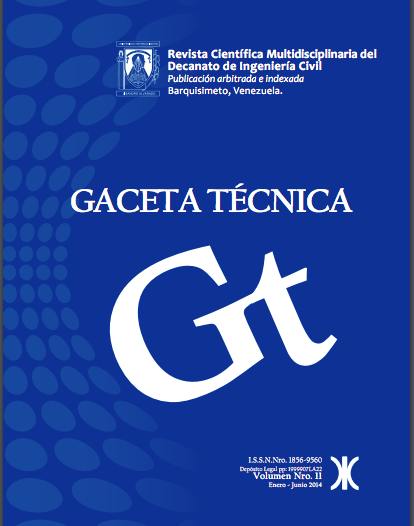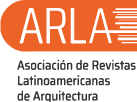Seismic behavior of reinforced concrete porticoes under the influence of the strong portion in a soft soil
Keywords:
accelerogram, soft soil, strong portionAbstract
The soil maximum acceleration is one of most widely used seismic disturbance parameters and it is associated with the earthquake destructive potential. However, there is no direct relationship between them since some earthquakes with large maximum accelerations do not cause further damage, recognizing that the acceleration maximum amplitude is a poor indicator of an earthquake destructive potential. Due to the earthquake complexity, it is not easy to define parameters which are able to obtain the strong portion of any seismic event to assess its behavior in reinforced concrete structures. For that reason, a definition to get the amount of portion considered as strong earthquake is previously needed. Nevertheless, this is performed using log-acceleration time history and its respective acceleration elastic response spectrum used to determine the stronger portion of the physical phenomenon
Downloads
References
DELGADO, Sebastián, SARCOS, Antonio, FLOREZ, Julio, PICON, Ricardo y MARANTE, María. “Daño Estructural en Pórticos Planos de Concreto Arma- do Diseñados Según Normas Sísmicas”. Revista Internacional de Desastre Naturales, Accidentes e Infraestructura Civil. 2003. Vol 3, No 1.
ESPINOZA, Betsy. “Determinación de Parámetros para un Modelo de Estrangulamiento por Desliza- miento de Refuerzo”. Tesis para optar al grado de Magíster Scientiae en Ingeniería Estructural, Uni- versidad de los Andes, Mérida. 2002.
FEBRES C. Rafael J. “Análisis Computarizado de Registros Sísmicos y Artificiales”. Tesis para optar al grado de Magíster Scientiae en Ingeniería Estructural, Universidad de los Andes, Mérida, 1991.
FLOREZ, Julio. “Modelo de Daño Concentrado para la simulación numérica del colapso de pórticos pla- nos”, Revista Internacional de Métodos Numéricos para el Cálculo y Diseño de Ingeniería. 1993. Vol. 9, pp 123-139.
PAZ, Mario. Dinámica Estructural. 3ra ed. Barcelo- na, España: Editorial Reverté, 1992. 648 p. ISBN: 84- 291-4854-X.
PICON, Ricardo. “Evolución de la Degradación de Rigidez en Pórticos de Concreto Armado”, Tesis para optar al grado de Magíster Scientiae en Inge- niería Estructural, Universidad de los Andes, Méri- da. 1999.
QUINTERO, Carlos. “Investigation on the seismic behavior of RC interior wide-beam connections”, PhD thesis, University of Michigan, EEUU. 1997. VIELMA, Juan, WILLIAM, Lobo y RIVERO, Pedro. “Influencia de la distancia epicentral sobre los fac- tores de reducción por ductilidad”. Revista de Ingeniería de la Universidad de Costa Rica. 2006. Vol. 16, No 1, p 59-79.
Published
How to Cite
Issue
Section
The opinions expressed by the authors do not necessarily reflect the position of the editor of the publication or UCLA. The total or partial reproduction of the texts published here is authorized, provided that the complete source and electronic address of this journal is cited. Authors have the right to use their articles for any purpose as long as it is done nonprofit. The authors can post on the internet or any other media the final approved version of their work.







.png)




